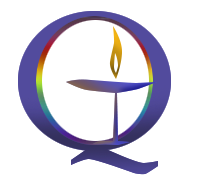Guest Blog by Native Connections Action Group

The theme for this week is “by our truth you shall know us.”
Also, this week is Indigenous Peoples Day. It is a day to honor those who have been on this land “since time immemorial.” Honoring involves understanding the truth about the history of indigenous people and settlers. This involves some difficult truths of genocide and land theft, and some easier truths of vibrant culture and arts.
The Native Connections Action Group (NCAG), a social and environmental justice group at QUUF, has as two of its goals:
- To educate our community to better understand the history of Native Peoples of the Olympic Peninsula, Salish Sea, and Pacific Northwest, as well as the far-reaching impact that colonization continues to have on Native Peoples;
- To deepen respect by increasing our appreciation for the rich traditions of Native cultures.
As part of meeting these goals, NCAG has partnered with the Jamestown S’Klallam Tribe to develop the číčməhán Trail in Port Townsend.
The číčməhán Trail signs provide information about the history of Chief číčməhán and the S’Klallam people in the village of qátay, now known as Port Townsend. To enhance this walking, biking, and driving trail, two benches were installed at two sites on the číčməhán Trail.
The benches, funded by a grant from the Ferguson Foundation, are located at the Four Points interpretive sign at the intersection of Van Buren and Blaine and the Laurel Grove Cemetery gravesite of S’Klallam Chief číčməhán, his wife si?ám’itsa (see-hem’itza) and a grandson. They offer the opportunity to rest and to contemplate the truths of our history.
Chief číčməhán, also known as Duke of York to the non-native settlers, lived in qátay from 1808-1888. After being banished from their traditional lands by the government, číčməhán’s descendents – the Prince family and other Tribal citizens – relocated to land north of Sequim known as Jamestown.
From Four Points, on a clear day, one can view Mt. Rainier, Mt. Baker, the Olympic Mountains, and Orcas Island’s Mt. Constitution. Chief číčməhán’s gravesite offers a southeastern view over the trees to Port Townsend Bay.
A 30-page booklet created by the Tribe includes a Trail map and descriptions of all 18 of the historic sites. Contact chetzemokatrail@gmail.com.
We encourage you to walk, ride or drive the trail to learn the indigenous history and experience Port Townsend from a different perspective.

Every time I think of the “Trail” a big smile appears.
Thank you to all that contributed.
I woke up this morning with more energy than usual, and the thought that I need to walk part of the číčməhán trail before we’re in winter, to hold that memory. Interesting to see your blog a few hours later! Thank you, Jo, Celeste, and all who provide us the opportunity to learn about and consider the indigenous people who were already settled here. Will read after the walk. Appreciated. Shawn.
Thanks Celeste! Maria Mendes and I collaborated on this edited version of our press release for the Weekly Update.
Congratulations on the benches! Our visiting friends and family have enjoyed and learned from the excellent trail markers. “Meet you at the totem pole” has proved to be a great place to gather.
Fabulous blog, Jo.
Especially with all the additional web sites included. You are a gem!